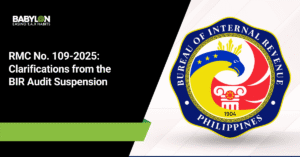Cash flow is the lifeblood of any business, and understanding operating cash flow is crucial for financial success. Yet, 48% of MSME business owners in the Philippines find cash flow management challenging.
Grasping the essentials of operating cash flow can help you make informed decisions and maintain a healthy financial status. Effective cash flow management ensures that your company can pay its bills, invest in growth, and withstand unexpected challenges.
In this blog post, we will explore the key components of operating cash flow and how you can manage it effectively. By mastering these essentials, you’ll be better equipped to steer your business toward sustained profitability and stability.
What is operating cash flow?
Operating cash flow (OCF) is the amount of cash generated by a company’s normal business operations. It represents the cash inflows and outflows directly related to the production and sale of a company’s goods or services. OCF is a crucial metric for assessing a company’s financial health and ability to generate cash internally.
Unlike net income, which includes non-cash items like depreciation and amortization, OCF focuses on cash that is actually available. It’s also a key indicator of whether a company can maintain and grow its operations without needing to rely on external funding. Strong OCF signals that a company is effectively managing its resources and is in a solid position to reinvest in growth or pay down debt.
Why is operating cash flow important?
Operating cash flow is a vital metric that reflects your company’s ability to generate cash from its core business activities. Here are some other reasons why it is so important: .
Assessing financial health
Operating cash flow is a key indicator of your company’s financial health. By analyzing your OCF, you can determine whether your business is generating enough cash to cover its expenses, pay off debts, and reinvest in growth opportunities. A consistently positive OCF suggests that your company has a strong financial foundation and is well-positioned for success.
Making informed decisions
Knowing your operating cash flow helps you make informed decisions about your business’ future. When you have a clear understanding of your cash inflows and outflows, you can better allocate resources, prioritize investments, and adjust your strategies to optimize cash flow. This knowledge empowers you to make data-driven decisions that support your company’s long-term objectives.
Securing financing
Lenders and investors often consider operating cash flow when evaluating a company’s creditworthiness and investment potential. A strong OCF demonstrates your ability to generate cash internally and repay debts, making your business more attractive to financial institutions and investors. By maintaining a healthy OCF, you increase your chances of securing the financing you need to fuel your company’s growth.
Navigating challenges
A solid understanding of your operating cash flow can help you navigate challenges and uncertainties. When faced with unexpected expenses, market fluctuations, or economic downturns, having a clear picture of your cash flow allows you to make necessary adjustments and maintain financial stability.
By proactively managing your OCF, you can build resilience and adapt to changing circumstances.
Planning for the future
Operating cash flow is essential for planning your company’s future. By analyzing historical OCF trends and forecasting future cash flows, you can develop realistic budgets, set achievable targets, and create long-term growth strategies.
The forward-thinking approach helps you anticipate cash flow needs, identify potential bottlenecks, and make proactive decisions to optimize your financial performance.
How to calculate the operating cash flow formula?
There are two primary methods to calculate OCF: the indirect method and the direct method. Each method provides a different approach to arrive at the same crucial figure.
The Indirect Method
The indirect method starts with net income and adjusts for non-cash items and changes in working capital. This method is widely used because it links the income statement with the cash flow statement, making it easier to understand the relationship between net income and cash flow.
- Start with Net Income: Begin with the net income figure from your income statement.
- Add Back Non-Cash Expenses: Include non-cash expenses such as depreciation and amortization. These expenses reduce net income but do not affect cash flow.
- Adjust for Changes in Working Capital: Working capital changes include accounts receivable, inventory, and accounts payable. For example, an increase in accounts receivable means less cash collected, so you subtract it from net income. Conversely, an increase in accounts payable means more cash retained, so you add it back.
The formula for the indirect method is:
OCF=Net Income+Non-Cash Expenses+/-Changes in Working Capital
The indirect method provides a comprehensive view of how net income translates into cash flow, helping you understand the impact of non-cash items and working capital changes on your cash position.
The Direct Method
The direct method calculates operating cash flow by directly listing all cash receipts and payments from operating activities. The method provides a more straightforward view of cash flow by focusing on actual cash transactions.
- Cash Receipts from Customers: Include all cash collected from customers during the period.
- Cash Payments to Suppliers and Employees: Subtract cash paid to suppliers for goods and services and to employees for wages and salaries.
- Cash Payments for Operating Expenses: Deduct cash paid for operating expenses such as rent, utilities, and other overhead costs.
- Cash Payments for Interest and Taxes: Subtract cash paid for interest and taxes.
The formula for the direct method is:
Operating Cash Flow (OCF) =
Cash Receipts from Customers
− Cash Payments to Suppliers and Employees
− Cash Payments for Operating Expenses
− Cash Payments for Interest and Taxes
The direct method provides a clear picture of cash inflows and outflows from operating activities, making it easier to see where your cash is coming from and where it is going.
Operating Cash Flow Example
To make it more understandable let’s walk through a practical example to illustrate how OCF is calculated.
The Indirect Method
Example:
Imagine your company, ABC Corp, has the following financial data for the year:
- Net Income: ₱500,000
- Depreciation: ₱50,000
- Increase in Accounts Receivable: ₱30,000
- Decrease in Inventory: ₱20,000
- Increase in Accounts Payable: ₱10,000
To calculate OCF using the indirect method:
1. Start with Net Income**: ₱500,000
2. Add Back Non-Cash Expenses: ₱50,000 (Depreciation)
3. Adjust for Changes in Working Capital:
- Subtract Increase in Accounts Receivable: -₱30,000
- Add Decrease in Inventory: ₱20,000
- Add Increase in Accounts Payable: ₱10,000
So, the OCF calculation would be:
| Net Income | 500,000 |
| Add: Non-Cash Expenses | |
| Depreciation | 50,000 |
| Increase in Accounts Receivable | (30,000) |
| Decrease in Inventory | 20,000 |
| Increase in Accounts Payable | 10,000 |
| Net Cash from Operating Activities | 550,000 |
This means ABC Corp generated ₱550,000 in cash from its operating activities during the year.
The Direct Method
The direct method lists all cash receipts and payments from operating activities, providing a straightforward view of cash flow.
Example:
Using the same company, ABC Corp, let’s assume the following cash transactions for the year:
– Cash Receipts from Customers: ₱1,200,000
– Cash Payments to Suppliers: ₱500,000
– Cash Payments to Employees: ₱300,000
– Cash Payments for Operating Expenses: ₱200,000
– Cash Payments for Interest and Taxes: ₱50,000
To calculate OCF using the direct method:
1. Cash Receipts from Customers ₱1,200,000
2. Subtract Cash Payments:
– To Suppliers: -₱500,000
– To Employees: -₱300,000
– For Operating Expenses: -₱200,000
– For Interest and Taxes: -₱50,000
So, the OCF calculation would be:
| Cash Flows from Operating Activities | |
| Cash Receipts from Customers | 1,200,000 |
| Payments to Suppliers | (500,000) |
| Payments to Employees | (300,000) |
| Payments for Operating Expenses | (200,000) |
| Payments for Interests and Taxes | (50,000) |
| Net cash from Operating Activities | 150,000 |
This means ABC Corp generated ₱150,000 in cash from its operating activities during the year using the direct method.
Ready to Optimize Your Cash Flow?
Understanding and managing your operating cash flow is essential for the financial health and growth of your business. By mastering cash flow essentials, you can make informed decisions, secure financing, and plan effectively for the future.
At Babylon2k, we offer top-notch consultation services tailored to your business needs. We also offer accounting services to help you with your overall financial management. Our experts are here to help you navigate the complexities of cash flow management and ensure your financial success. Sign Up as a client and request a quote today to take the first step towards a more financially stable and prosperous business. You can message our AI chatbot today for personalized assistance or reach us at [email protected]. You may also send us a message in Viber/WhatsApp at +63-927-945-3382.






